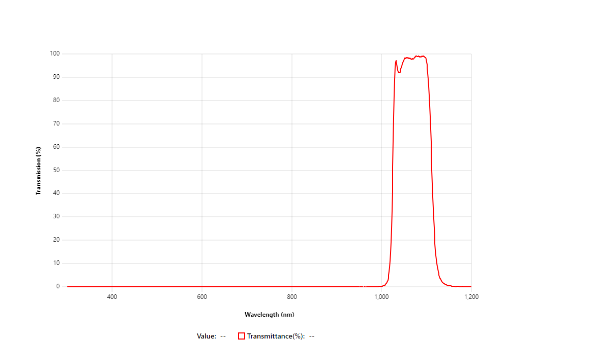Band Pass Filter: Types and How Does It Work?

Bandpass filters affect how light is manipulated and utilized in various devices. Understanding the functions and applications of these optical filters not only enhances our understanding of optical systems but also promotes technological and scientific innovation.
This article will delve into the nature of bandpass filters, clarify their working mechanisms, and explore their diverse applications in optical devices.
What is a Band Pass Filter?
A band pass filter in optics is a device that allows a specific range of wavelengths to pass through while blocking others outside this range. These filters are fundamental components in numerous optical systems, where precise control over the light spectrum is necessary.
By selecting certain wavelengths, band pass filters can tailor the light input to meet specific requirements, thereby enhancing the performance of optical instruments.
Construction and Types
Optical band pass filters are typically constructed from glass or plastic substrates on which various coatings are applied. These coatings are designed to reflect or absorb non-desired wavelengths while transmitting the desired spectral band.
The filters can be categorized based on their construction into two main types: interference filters, which operate on the principle of wave interference, and absorptive filters, which use materials that selectively absorb certain wavelengths while transmitting others.
How Does a Band Pass Filter Work?
The operation of a band pass filter centers on its ability to discriminate between wavelengths of light, permitting only a select band to pass through.
The Principle of Selective Wavelength Transmission
The core principle behind the band pass filter is selective wavelength transmission, which is achieved through either interference or absorption. In interference filters, multiple layers of dielectric material create constructive and destructive interference patterns, which enhance the transmission of desired wavelengths while attenuating others. This method is highly efficient and provides sharp cutoffs between the transmitted and blocked wavelengths.
Role of Filter Design
The design of a band pass filter, including the thickness and sequence of its layers, dictates its performance characteristics such as the central wavelength, bandwidth, and the steepness of the transmission edges. Engineers can design filters with very narrow or very broad bandwidths, depending on the application’s needs, by adjusting these parameters.
Applications of Band Pass Filters in Optical Devices
Band pass filters find extensive applications across various fields, demonstrating their versatility and critical role in optical technologies.
Photography and Imaging
In photography and imaging systems, band pass filters are used to enhance image quality by controlling the spectral composition of the light reaching the sensor. They can help in reducing glare, improving contrast, and capturing specific spectral signatures for tasks such as astrophotography and fluorescence microscopy.
Scientific Research and Spectroscopy
Band pass filters are indispensable in scientific research, particularly in spectroscopy, where they enable the isolation of specific wavelengths for analysis.
The discussion will continue with a deeper exploration of the applications in telecommunications and health sectors, followed by a conclusion that encapsulates the importance and future prospects of band pass filters in optics.
This exploration into the functionality and utility of band pass filters highlights their indispensable role in modern optical applications, paving the way for advancements in technology and science.
Telecommunications
In the realm of telecommunications, band pass filters serve as essential components to ensure signal clarity and efficiency. They are used to filter out unwanted frequencies from signals in fiber optic cables, which can carry a multitude of different signals at varying frequencies simultaneously. By employing band pass filters, only the necessary frequencies pass through, significantly reducing interference and enhancing the quality of data transmission.
Health Care Applications
Band pass filters also find significant applications in medical devices, particularly in diagnostic imaging equipment such as X-rays and MRI machines. These filters are crucial for selectively allowing the transmission of specific wavelengths that are most effective for imaging particular types of tissue or organs.
In laser surgery, band pass filters help in directing precise wavelengths to the surgical site, minimizing damage to surrounding healthy tissues and enhancing the precision and safety of the procedure.
Conclusion
Bandpass Filters By selectively controlling the wavelength of light, these filters enhance the functionality and efficiency of a variety of optical devices across multiple industries. From improving the quality of digital images to ensuring the purity of signals in fiber optic communications, bandpass filters impact a wide range of technology areas.
The continuous development and integration of Optolong’s optical filters into new optical systems will certainly open up more possibilities, contributing to the advancement of scientific research and the improvement of many technologies used in daily life, please feel free to contact if you need it them!


